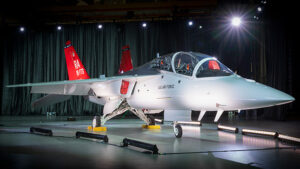
SEATTLE--Boeing [BA] wants to scale up the digital engineering approach the company said it took with the U.S. Air Force T-7A Red Hawk trainer to other programs. Through simulation, the company would build the first few aircraft of a given type to work out design and production process kinks. "For everything we do physically, we want to have a digital twin of that where we can predict the performance of what's going to happen once we do it for real,"…














